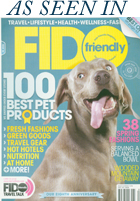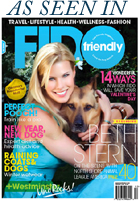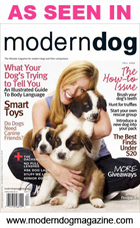Bonding is one of the most important, fulfilling, and rewarding aspects of obtaining a dog. The benefits are immeasurable for both you and the dog not only from a physical health stand point but also for improving and maintaining mental health as well. There are many ways to bond with your dog and play time is a great way to “get the ball rolling†so to speak. Play time is important because it builds the method by which you and your dog are going to communicate throughout its life. Playing with a particular toy is fun for both of you however, what you, as a human, consider merely play is much more important to a dog. Have you ever noticed when you are visibly upset that your dog will often bring you its favorite toy and try to get you to play? Why do you think it does this? It’s because of the fun you both have when you have been playing with that same toy time and time again. Your dog is not necessarily being selfish in wanting to play, but bringing something to you that it knows you both had fun with is now the dogs way to communicate with you that it wants to cheer you up. The simple truth is that your dog knows you feel bad about something and bringing you its favorite toy is one of the only ways it knows to communicate with you and try to comfort you.
Some may say that I am giving dogs too much credit in comprehending your mood and their surroundings but I think not. Once the bond is built between a dog and its owner, that bond can be very strong and no outsider (except possibly another dog owner) can understand this concept.
Focusing on one particular toy, a tennis ball, a plastic football, a tug rope, or squeaking toy that your dog seems to like better than the others, is a great way to start to create that bond. Always start playing with this one recognizable toy during every play time and make sure it is a toy that is easily replaceable with an EXACT duplicate including size and color. For Butch, it is his BLUE porcupine football. Believe it or not, not all dogs have the same degree of colorblindness and can distinguish many colors but this is another topic . Every time we play, we always start with that same ball for at least a few tosses, and then we may move on to something else. If we are outside, it’s on to the Frisbee or flying fiber disc. This also helps keep him calm if we go on long trips. Just knowing that our familiar ball is with us keeps him a little calmer.
Another helpful tip is, NEVER intentionally trick your dog while playing. Play period is a trust building exercise for both of you. This doesn’t matter if the dog is a puppy or a rescue dog. Building trust is part of the bonding process and pretending to throw a ball and hiding it behind your back repeatedly is not a good way to build that trust. After you have a couple of years with that dog under your belt, then maybe, once in awhile a fake throw is not a bad thing. But, if you are playing “fetch†with your dog, and it is running away from you to get something that it thinks you threw, you better make darn sure that something is waiting for him or her when they get there!
Another important tip is NEVER startle your dog on purpose and I mean NEVER! I am the biggest prankster that I know and there have been plenty of times when I was able to sneak up on Butch while he was sleeping or had his eyes closed. A younger version of me would have done something or made a loud noise to wake him. Being the older and hopefully wiser version, when ever I approach Butch while he is sleeping he has always been met with a soft caress on the head and now he doesn’t even flinch when I walk by. He just opens his eyes and then goes right back to sleep. This has taken time for him to know that I am no threat to him and he now TRUSTS me implicitly. Our high level of trust and strong bond is all due to the restraint of childish antics on my part that at one time I probably would have done. Just as you know a puppy or a new dog will startle at every little sound in its new surroundings, it is our job as owners or “Dog Parents†to make sure that they do not flinch at anything we do in a normal act of living. They may flinch at first while adjusting but this should end after they become familiar with their new surroundings. Consistent behavior is the key to developing the bond that your dog so badly wants to have with you. Patience, love, and understanding are the keys to the castle in this case. It’s like any relationship really, you can help it to grow but betrayal will ruin it very quickly.
Butch and I have had almost 4 years together now and I can verify that Butch knows I love him and he loves me right back. It can be a slow process but it is one of the most rewarding I have ever gone through! Â


























